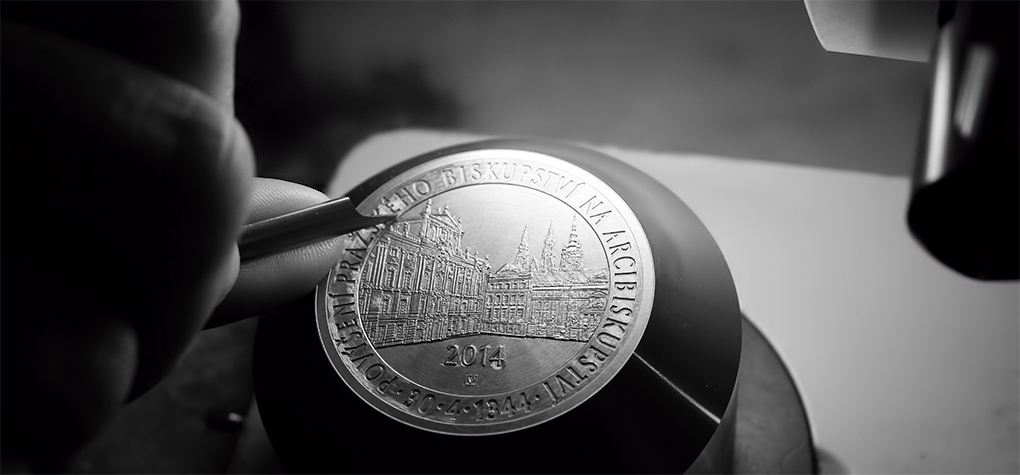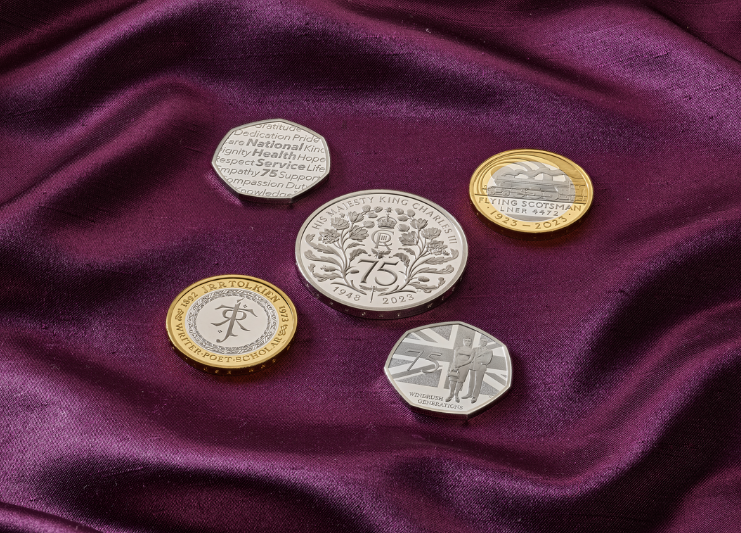Excellent News On Janvier Processing Prague Mint Coins
Wiki Article
How And Why Would You Scan A Plaster Model To Create A 3d Digital Model Of Gold Coins Or Medals?
Scanning a model made of plaster to create a 3D digital model for gold coins or medals requires specially designed equipment to record the maquette's physical details and dimensions in a digital format. Digital replication is used for a variety of purposes in the production processHow the Scanning Process Works
3D Scanning Technology- High-resolution 3D scanners are used to capture the physical dimensions as well as the details of the plaster model. The scanners employ various techniques like laser scanning or structured light, to take precise measurements and the geometry.
Capturing Surface Data - The scanner releases laser or light beams onto the surface of a plaster model. The scanner captures any distortions or reflections caused by the laser beams and can record the surface information of the model.
Data collection - The scanner gathers data when it travels across the model. This produces an electronic representation of the model's contours, geometry and other details.
Conversion to 3D Model: The data points are recreated using specially designed software. This model reflects the physical dimensions and features of the maquette of plaster.
The reasons to create a Digital 3D Model
Digital 3D model allows for precise replication of the physical model's dimensions and other details. This will ensure that the final gold coins as well as medals are designed to match the design intended.
Digital models can be easily altered and improved. Designers are able to modify 3D models without altering their original plaster maquette.
Compatibility of Digital 3D Models with Manufacturing Processes. Digital 3D model are compatible with various manufacturing processes, including CNC machine.
Digital 3D models can be used to archive and document the design. They can be saved digitally for future references, reproductions or documentation for historical purposes.
By scanning models of plaster and creating 3D digital models, manufacturers and designer can improve their production processes, ensure accuracy of replication and utilize advanced manufacturing technology to produce gold coins and gold medals with a high degree of precision and fidelity. View the best Scanning and 3D Modeling Prague Mint gold coins blog examples. including 1 4 oz gold coin, gold dollar coin, gold coin price today, gold medal gymnasts, 1 oz gold eagle, purchasing gold bars, double eagle gold coin, gold biscuit buy, american eagle gold coin price, small gold coins and more.

How Does A Janvier Machine Transfer A Gold Coin Or Medal Design From The Master Hub Onto The Working Hub?
A Janvier machine, also referred to as a pantograph, or reducing machine is a machine used in the process of minting that transfers the design of a medal or coin from a master hub the hub that is working. This article will provide an overview of how this Master Hub Creation works.
The master hub is the die or mold, that contains the exact design for the coin or medal. To ensure precision the hub is usually made using CNC machining and other precision techniques.
Janvier Machine Installation
The Janvier machine has an instrument to trace the design on the hub master, and a cutter that duplicates the design.
The Janvier machine includes the master wheel which is linked to the machine. It is used as a model from which designs will be transferred.
Tracking The Design
The Janvier machine uses stylus that follows the contours and details of the design. The stylus tracks the shape of the design when it travels across the surface of the hub.
Reducing the Design
The cutting tool on the Janvier machine replicates the design traced onto the hub that is working that is typically made of softer material than the hub used for the master such as nickel or steel.
The cutting tool reduces or copies the design onto the hub of the working wheel in a smaller dimension or size compared to the hub that is the master hub. This reduction is vital to the minting process, as it allows for the striking of medals or coins in the size you want.
Accuracy and Precision
Janvier is a precision machine that guarantees a precise transfer of designs from the master hub to the working hub. It faithfully recreates the most intricate details and contours.
Quality Control -
The hub that is used for the operation will be subjected to inspection and quality control to make sure that it matches the required specifications and precision for the strike process.
Further Processing-
The Janvier working hub is an tool for the striking process of medals or coins. It serves as a die or mold for multiple coins or medals blanks which have the transfer design.
Janvier machines are crucial for the production of coins and medals. They enable the precise replication of intricate coin or badge designs. These working Hubs are used for the mass production of coins or medals through the striking procedure. See the best janvier processing Czechoslovakia gold medals blog tips. including gold price coin today, gold and silver coins, gold bullion coins, 1oz gold, sacagawea gold dollar, double eagle gold coin, saint gaudens gold coin, silver eagle coins, gold coins and bullion, chinese gold coins and more.

What Is The Reason And How Are Gold Blanks Of Superior Quality Measured And Weighed Before The Minting Process Starts?
To ensure the accuracy and consistency of gold awards or coins Blanks of high-quality must be prepared meticulously for the minting procedure. The preparation process for gold blanks is explained below. Gold is refined to meet purity requirements for coins.
Gold Blank Production - The gold material is cut into blanks through an engraver process. Blanking is a process that involves cutting coins-sized discs, or planchets, made from gold.
Precision Measurement and Weighing
Weighing- Every blank is weighed individually to make sure it is in compliance with the weight requirements for the coin or medal. This ensures each piece has the exact amount of gold required for the denomination desired.
Measurements- Every blank is measured to ensure that it is in compliance with the design specifications and uniformity.
Inspections and Quality Control
Visual Inspection- Each piece is visually inspected to detect any imperfections on the surface, irregularities or contaminants that could affect the quality of the final product.
Rejecting Sheets that Are Not Conforming - To ensure uniformity sheets that do not meet the required standards for dimensions, weight or quality are rejected.
The reasons for preparing
Consistency of Minting ProcessA precise weight and measured blanks guarantee uniformity in the minting process. The consistency of weight and size result in a uniform strike. This produces coins or medals of the same quality and worth.
Gold with a precise content Every blank's weight is precise, which means the gold coin or medal will be filled with the exact quantity of gold designed, ensuring the purity and accuracy.
Uniform Blanks - Prevent any variations in size or weight which could impact the value of the coin or medal and legality, or its suitability for circulation or for commerce.
Quality Assurance - Strict measures of quality control throughout the process of making blanks ensure that only the highest quality, defect-free, blanks are delivered to the minting stage to reduce the risk of flaws appearing in the final product.
Legal Compliance - Uniformity and adherence to specifications are crucial for coins intended to be used for commemorative or circulation for purposes. They must meet the legal requirements and standards established by mints and regulatory bodies.
Making gold blanks of top quality and with consistency are essential steps during the coining process. They guarantee the quality and precision of gold coins that are high-value and medals. View the best gold blanks for Prague Mint gold medals site tips including 10oz gold bars, one ounce gold bullion, canadian gold maple leaf coin, american gold eagle, gold and coin dealers near me, 1 10 oz gold coin, american gold eagle 1 oz, buy gold coins, 1 4 oz gold coin, gold silver bullion and more.

How Is Gold Fed Into The Coin Presses, And Then Stamped Under High-Pressure While Minting?
In the process of minting gold blanks are loaded into coin presses and then stamped under high pressure to transform them into pieces of gold or coins. This article will provide an outline of the process for loading blanks.
In a feeder system that is linked to the press, gold-plated blanks have been previously prepared and quality-tested. This feeder system guarantees an ongoing supply of blanks to the machine.
Feeding Blanks Through the Press
The feeder system guides the blanks one at a time into the striking chamber of the coin press. This allows for precise positioning of the blanks.
Alignment and Positioning
The blanks will be aligned within the press and then placed into the room for striking making sure that they are in the right place and placed to enable the stamping.
Moving in High Pressure
Coin presses gold blanks using high pressure by using two dies - one stationary, and the other moving. The stationary coin die gives a negative image of the coin design. While the die that moves is used as a hammer to hit the blank while the stationary one has the positive impression.
Die dies hit the blank with a lot of force, transferring the design on its surface. The die's pressure creates the design as well as the raised relief.
Repeated Striking (Optional)*
To produce a more sharp image or more defined appearance, multiple strikes are often applied to higher quality coins and medals, especially proof editions. Each strike increases the fine details of the outside of the coin.
Collection and Ejection
Once struck, the coins or medals that are produced are removed from the presses. They then are collected in containers and trays. The designs that are stamped are examined for quality control to ensure that they meet the standards and standards.
Post-Processing-
Minted medals or coins may undergo additional processing, like edge lettering, edge reeding or post-strike processes based on the design requirements or mint specifications.
Stamping gold blanks with high pressure is vital since it imprints the design you want to see on them, turning them into finished medals and coins that can be used for celebration and collection, or even circulation. The process is extremely precise, since any changes in pressure or alignment could impact the quality of the final product. Follow the top minting Prague Mint gold coins blog advice. including cost of gold coins, gold bars price, 2000 olympic, 1 10 oz gold coin, 2000 olympic, 1 0z gold, silver double eagle, gold bullion, price of 5 dollar gold coin, 10 dollar gold coin and more.
